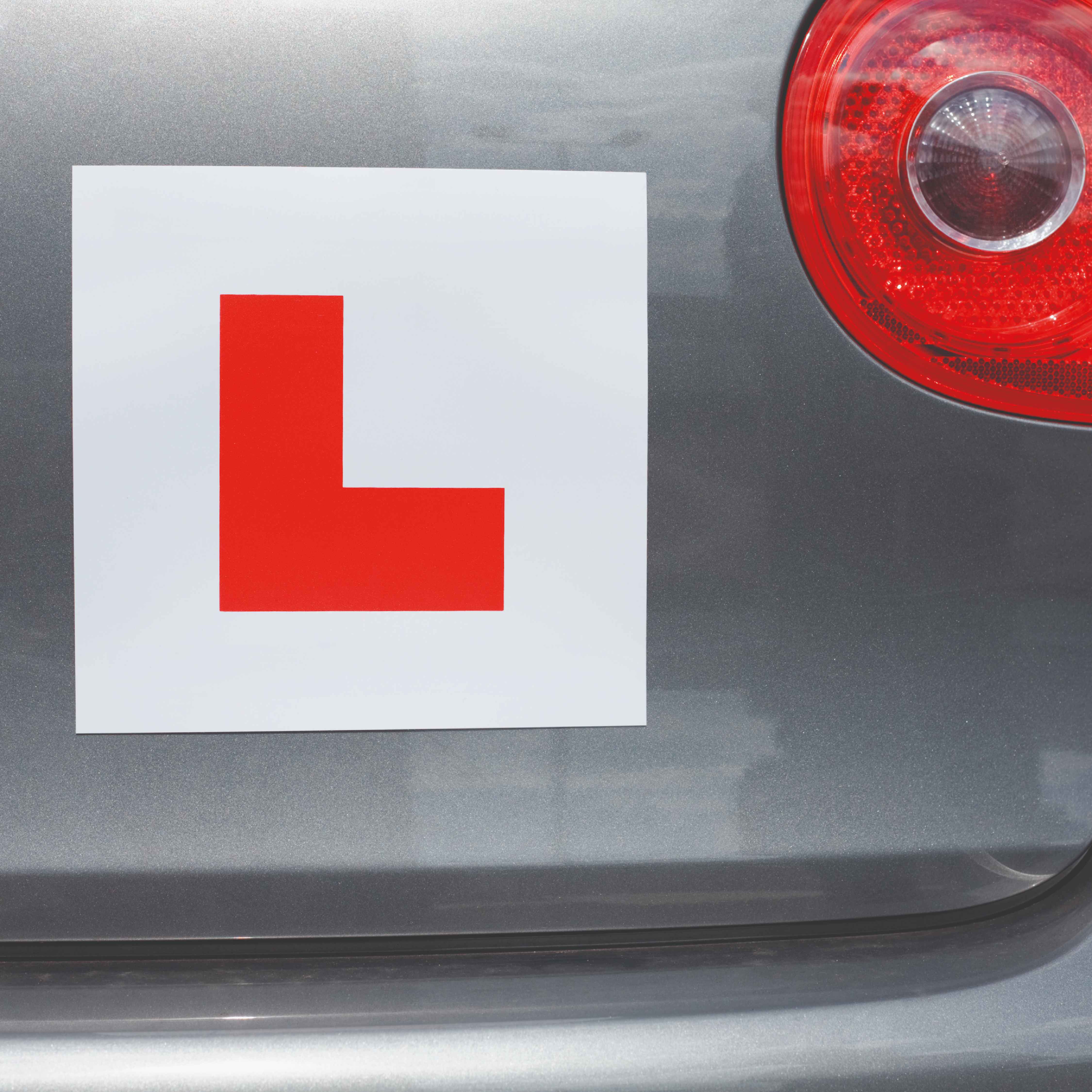The difference between L plates, D plates and P plates
07/02/2023
Learning to drive is one of life’s major milestones. And there’s a lot to take in. Aside from the technical aspects of taking driving lessons, there’s a bundle of rules learners must adhere to along with some misconceptions. Some of these are related to the display of L plates, D plates and P plates.

What is the difference between L plates, D plates and P plates?
‘L’ stands for ‘learner’ and the white plates with a red letter have been a requirement in Great Britain since the 1930s. The first driving competency tests were launched in 1935 and L plates were introduced at the same time. The display of L-plates on a car indicates that the person driving has not yet passed their theory and practical tests.
Unless you live and learn to drive in Wales, you won’t need D plates on your car. The ‘D’ refers to ‘dysgwr’, the Welsh word for ‘learner’. The D plate was introduced as part of the bilingual requirements in the country. If you live near the border between England and Wales or will be crossing over at some time, it’s a good idea to have both D and L plates. Like the L plate, the D plate has a red character on a white panel.
The P plate is a relatively recent initiative in the UK. The ‘P’ stands for ‘probationary’ and indicates a driver who has not long since passed their driving test. Displaying a P plate - which has a green letter on a white background - means other road users should show some extra consideration to the driver who is still developing their skills and experience behind the wheel.
L plates - the rules and how to use and display them
L plates make it easy to spot learner drivers on the road. L plates are a legal requirement and are necessary as part of the Highway Code which has a whole section on learner drivers. Learner drivers also need to have a valid provisional licence and be accompanied by a qualified person who has held a driving licence for three years or more.
Other motorists, pedestrians and cyclists should give those with L plates some extra space on the road and be prepared for sudden stops and for them to be driving slower than most. The rules around L plates (and D plates) apply whether the learner driver is in their own car, someone else’s or that of a driving instructor and the main ones are as follows:
L plates must have a red letter on a white background. The plate has to be 178 mm x 178 mm. There are also rules for the dimensions of the ‘L’ itself. It should be 102mm tall and 89mm wide with a 38 mm width at the horizontal ‘foot’ of the character and 40 mm at the horizontal ‘head’. The ‘L’ should also be positioned in the centre of the plate.
There are even requirements for the font of the ‘L’. It should be in the Charles Wright typeface, the same font used on UK number plates.
L plates can only be used by a learner driver and cannot be displayed once the person has passed their test. If someone else is driving the vehicle the L plates should be removed. The only exception to this is for instructors and only on their official driving school car.
You must have two L plates on your car. There are no specific rules on the placement of L plates except that they should be visible to other road users on the front and rear of the vehicle. Don’t place them on the front or rear windscreens as this could block your view.
If you don’t comply with the rules on L plates then you run the risk of a fine and six points being added to your licence.
You can theoretically print your own L-plates though this isn’t advisable. Meeting all of the requirements can be a challenge at home though. You also run the risk of DIY L plates being easily damaged and falling off the car. You are much better off buying some professionally made L-plates and they aren’t expensive at all.
A few words on P plates
Newly qualified drivers are not required to have P plates on their cars but it is recommended. P plates let other drivers know you haven’t held a full licence for long and to take extra care when you’re on the road near them. According to Brake, the road safety charity, one in five drivers have a crash within a year of taking their test. P plates are just one tool to improve road safety for inexperienced motorists.
There’s no official guidance for how long new drivers display P plates but a period of a few months, perhaps up to a year is a good idea. It’s a matter of personal choice and you can use P plates for as long as you wish making them a good option for nervous or cautious drivers. It’s best to only remove P plates when you feel confident and competent enough to do so.
Position two P plates on the car as you would L plates. That’s one to the front and one to the rear. Make sure they won’t obstruct the driver’s view. There aren’t any further rules on the use of P plates. You can buy an adhesive or magnetic P plates. Some people like to have P plates with ‘New Driver’ also displayed on them to make doubly sure all road users understand what they mean.
Do you still have questions about what plates you should use when you’re learning to drive and have just passed your test? G6S are a leading provider of driving tuition products and resources including L plates, D plates and P plates. Contact our friendly experts to find out more.
